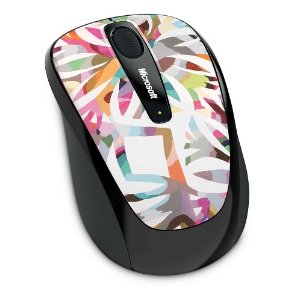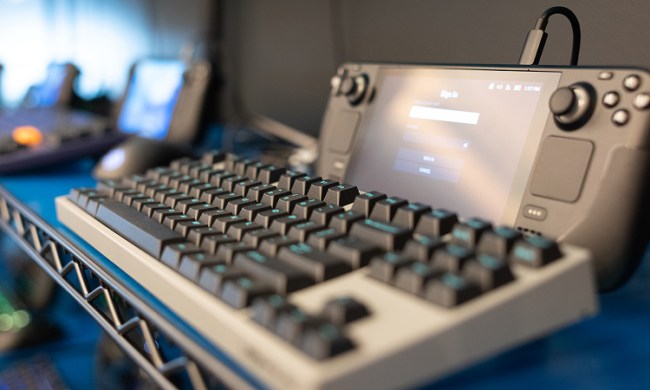
Touchscreens have become so popular that Microsoft designed an entire operating system around them. Though touchscreens are becoming more and more popular, most people still use a keyboard and mouse to work with a computer. These core peripherals have served reliably for decades and will probably dominate for at least a decade more.
Buying a mouse or keyboard for $10 or less isn’t difficult, and some desktops come with a keyboard and mouse in the box. However, you may have noticed that much more expensive versions are available at your local retailer, and wondered why? What could make a keyboard or mouse worth $50 or more? Let’s take a look.
When you decide which type of mouse and keyboard fits your needs, check out our in-depth keyboard and mice reviews or jump straight to our best keyboards and mice list to find the models that got the best reviews.
Wireless increases convenience for cost

The advantage of using wireless peripherals is simple: they don’t use wires! This makes the peripheral more convenient because you can move without worrying about cords getting in the way. You could, for example, remove the keyboard and mouse to free up desk space when needed.
Although more expensive, wireless is far from unaffordable. Microsoft and Logitech, the giants of the peripheral market, offer wireless bundles with a keyboard and a mouse starting at about $30.
There are a few disadvantages you should know about. Wireless devices will require new batteries every few months unless they contain a permanent rechargeable battery (most don’t). They also can have problems with wireless interference. It’s not a problem for most users, but gamers will find it enraging if the mouse cuts out at a crucial moment.
Spending a few bucks to banish wires isn’t a bad deal for the average user. We recommend it to everyone except hardcore gamers.
Media keyboards aren’t essential
Many of the keyboards that are priced between $30 and $60 call themselves a “media keyboard.” This is not a standard term, so it can mean different things. The term “media keyboard” generally refers to a keyboard that has media buttons like play, pause, adjust volume, and so on.
This can be nice for people who frequently watch movies on a PC, but the controls are redundant with those found in software. They also, in our experience, are not 100-percent reliable. The buttons may work in most media players but not on YouTube, or they may work in YouTube but not in your favorite third-party media player.
We don’t recommend buying a keyboard just because it has media buttons. If you’d like the same functionality, but don’t want to spend any money, you can try a program like AutoHotKey to create your own keyboard shortcuts.
Mechanical keyboards are a typist’s dream

It’s all about what’s under the keys. Inexpensive keyboards use a rubber dome to resist keystrokes. It collapses when a key is pressed, then resumed its resting position when pressure is removed. That works fine, but it often provides a mushy feel and can wear out after a few years of hard use.
Mechanical keyboards use a metallic switch mechanism to provide resistance to the keys. It makes more noise, which some typists love, and provides more immediate tactile response, which helps when touch-typing.
Most people don’t need a mechanical keyboard. But if you’ve ever bragged about your typing speed, or you believe touch-typing a valuable skill, consider one. It will make the mundane task of typing more enjoyable. Pictured right is the Cooler Master CM Storm QuickFire Rapid Keyboard.
Lighting the dark

This is a great extra for users who often use their PC in the dark. Gamers are the typical target audience, since games are often more immersive in a dark room with a big screen; but it can be useful for anyone.
Price is a problem, however. The cheapest backlit models, which are usually bare-bones in other areas, sell for around $40. Adding other features can quickly raise the price to $80 or beyond. Pictured right is the Razer Anansi keyboard.
More mouse buttons, less problems?
The typical freebie mouse will include the two usual buttons and a scroll wheel. If you’re lucky the scroll wheel will also be clickable. And that’s about all you’ll get with a standard mouse.
Spending about $25 will get you a wired mouse with more buttons. Expect to pay another $10 to $15 for wireless. Most mice offer five buttons (two new buttons on the side) but some have up to fifteen.
Do you need all the added buttons? Probably. A five-button configuration usually places those two new buttons by your thumb. They can be used for common tasks like moving forward/back in a browser. It’s great to have more functions at your fingertips.
Even more buttons are useful in role-playing games and strategy games but are rarely needed when practicing your elite Microsoft Excel skills. That’s why we recommend a 5-button mouse to most readers.
Laser beams on your desktop

High-end mice often boast their resolution, which is measured in DPI. The higher the DPI, the more sensitive the mouse is. A mouse offering 6000 DPI can zoom across a screen with barely any physical movement, but a mouse offering only 800 DPI will have to move several inches.
Speed isn’t always a good thing, however. A high-resolution mouse can be hard to move accurately because the slightest twist can send the cursor on a cruise. Mice like this often include sensitivity adjustment buttons for this reason.
We recommend buying a laser mouse. You can buy one for as little as $30 and they’re accurate on almost any surface. We don’t recommend any specific DPI; just remember that higher numbers translate to a quicker mouse cursor.
Weights and adjustments
Some mice are now sold with adjustable weights or even adjustable grips. These features attempt to increase accuracy and comfort by providing a mouse that conforms perfectly to a user’s hand and has exactly the resistance desired. Most mice with these features are sold as gaming products, but they can appeal to the average user.
We think these features are useful. Increasing the weight of a mouse can increase accuracy because it will better resist small, twitchy movements. Changing the grip can make it as relaxed as you’d like. Both can result in a more comfortable experience.
These are luxuries, however. Mice with adjustable weights start at $40, and those with adjustable grips are often $80 or more. Many users won’t find the benefit to be worth the cost.
Conclusion
Buying a pair of new peripherals for a desktop can seem hard to justify if you already have a mouse and keyboard that came free with your desktop. Still, our recommendation for most users is to buy a wireless keyboard and a wireless mouse. The mouse should use laser technology and have five buttons.
This won’t cost a fortune. Logitech’s Cordless Desktop LX 310 offers all of this for $50. Microsoft’s Wireless Desktop 5000 can be had for about the same price. Both provide everything the average user needs and won’t bust your budget.
[Lead image via Elena Itsenko/Shutterstock]
Now that you know what you need, check out our in-depth Keyboard Reviews or jump straight to our Best Keyboards list to find the models that got the best reviews.


